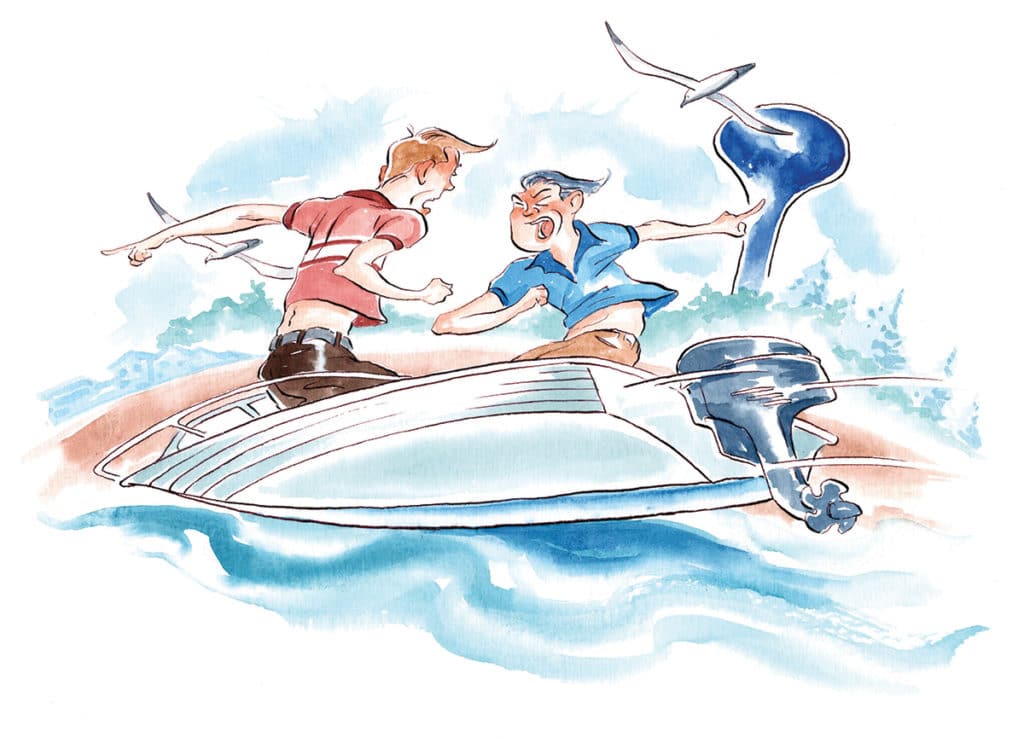
Along with “Hey, nice sextant,” and “It’s your turn to get up and adjust the TV antenna,” you don’t hear people say, “Where the hell are we?” much anymore. Like roller disco, getting misplaced on this planet has become a thing of the past, not likely to return. If you can afford a GPS — and most of us can — you’ll never have an excuse for showing up late. You might occasionally become disoriented, but truly misplaced? Those days are gone, as is hearing something like this, taken from my 1996 log notes, written somewhere off the coast of New Jersey:
“We’ve passed two standpipes, a tank and a tower. So we’re just off Brant Beach.”
“Well, I make it one standpipe, two tanks and a cupola. So we’re almost abeam Peahala Park.”
“A cupola? What the hell is a cupola?”
“I dunno. They put them on top of fancy buildings and cabooses.”
“That thing was a tower. And besides, it’s pronounced coop-a-la, not cup-a-la.”
“Whatever you call it, it wasn’t no damn tower.”
“Was too!”
“Was not!”
“Aaaaargh! OK. You win. It’s a damn cooooop-a-la. But those last two were definitely standpipes, and that is Brant Beach.”
“Listen, Magellan, there was only one standpipe. The other was a tank. And that is Peahala Park.”
“Oh yeah? Well, what’s the difference between a standpipe and a tank?”
“It’s kind of, well, sorta, ah, pipelike. Isn’t it?”
“I dunno.”
“And I don’t know. So … where the hell are we?”
Some think it’s good that we no longer need to navigate like this. They prefer a chart plotter’s cursor that says “you are here.” But you’re not. It’s just a blip on a screen, not your place in, or relationship to, the real world. That takes direct observation, which takes counting standpipes, cupolas and passing towns, and actually looking around.
I still carry charts because paper lets you take in more and take it in faster than looking at a screen. To get details on an electronic chart, you have to zoom in so far that it’s impossible to get an overall picture of where you are. By forcing you to be part of the world, charts also help you develop a sense of direction. It’s been proven that we have an innate capability to find our way. But as we’ve become more detached with aids, such as GPS, we’ve gotten out of touch with this sixth sense. Down deep, there’s an internal rhythm that lets us sense elapsed time. With practice, it’s possible to gauge the time within 10 minutes over a 12-hour period. And if you can judge time while traveling at a constant speed, you know you how far you’ve gone.
We can also judge direction. There is a tiny crystal of magnetite in the ethmoid bone between our eyes. A researcher at the University of Manchester, England, found that a magnet on a subject’s head made him tend toward that side. Other animals can align themselves with Earth’s magnetic field, so why not us? Even if we can’t, there are clues in nature, such as the sun, wind and waves, that an observant boater can use to hold a straight course.
With time, distance and direction, you have all you need for basic navigation. Add that to a few observed landmarks, and you can find your way back from anywhere — even New Jersey. Just get your head back in the real world. I’ll see you outside the inlet; I’ll be looking for that cupola.









